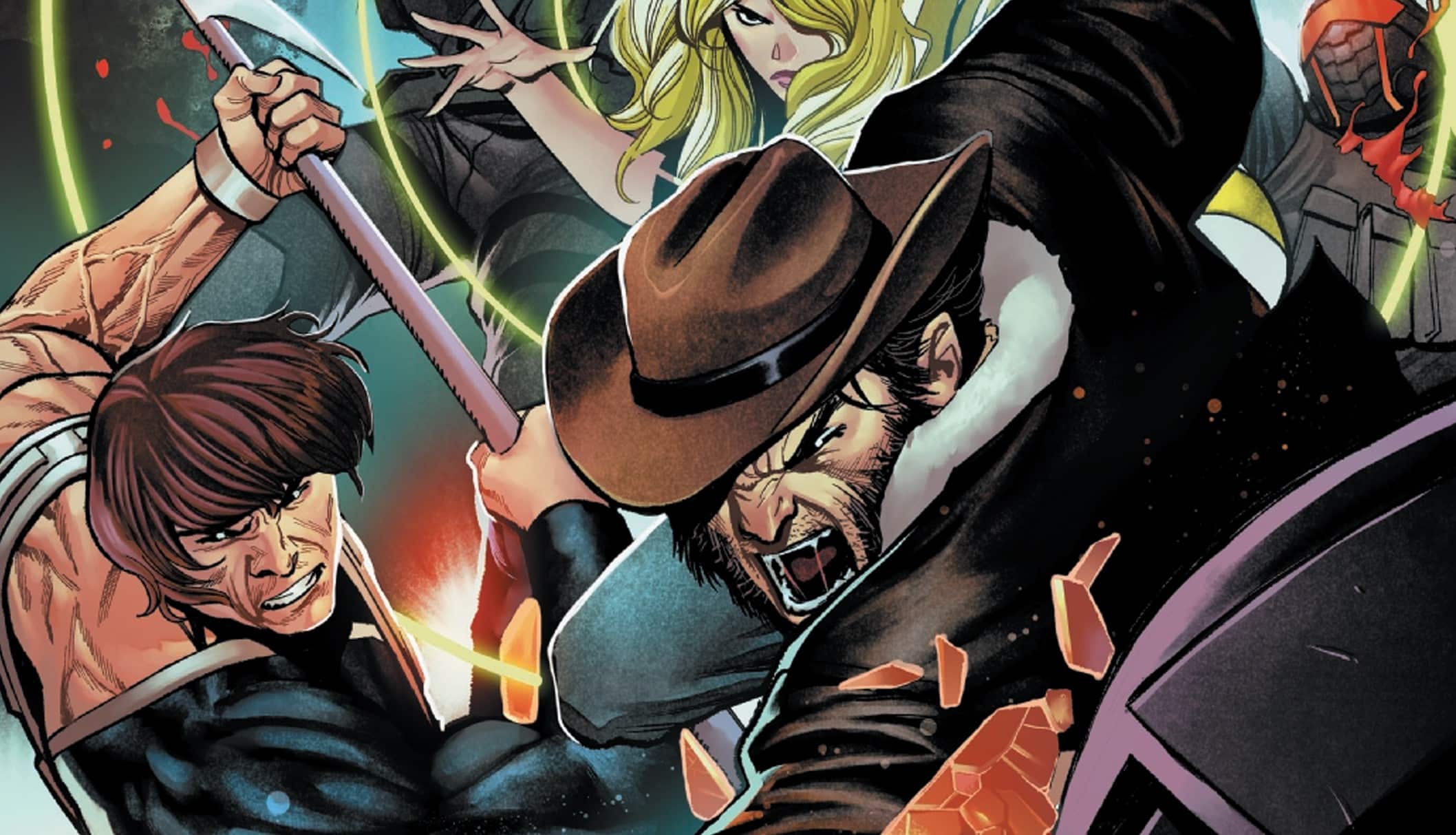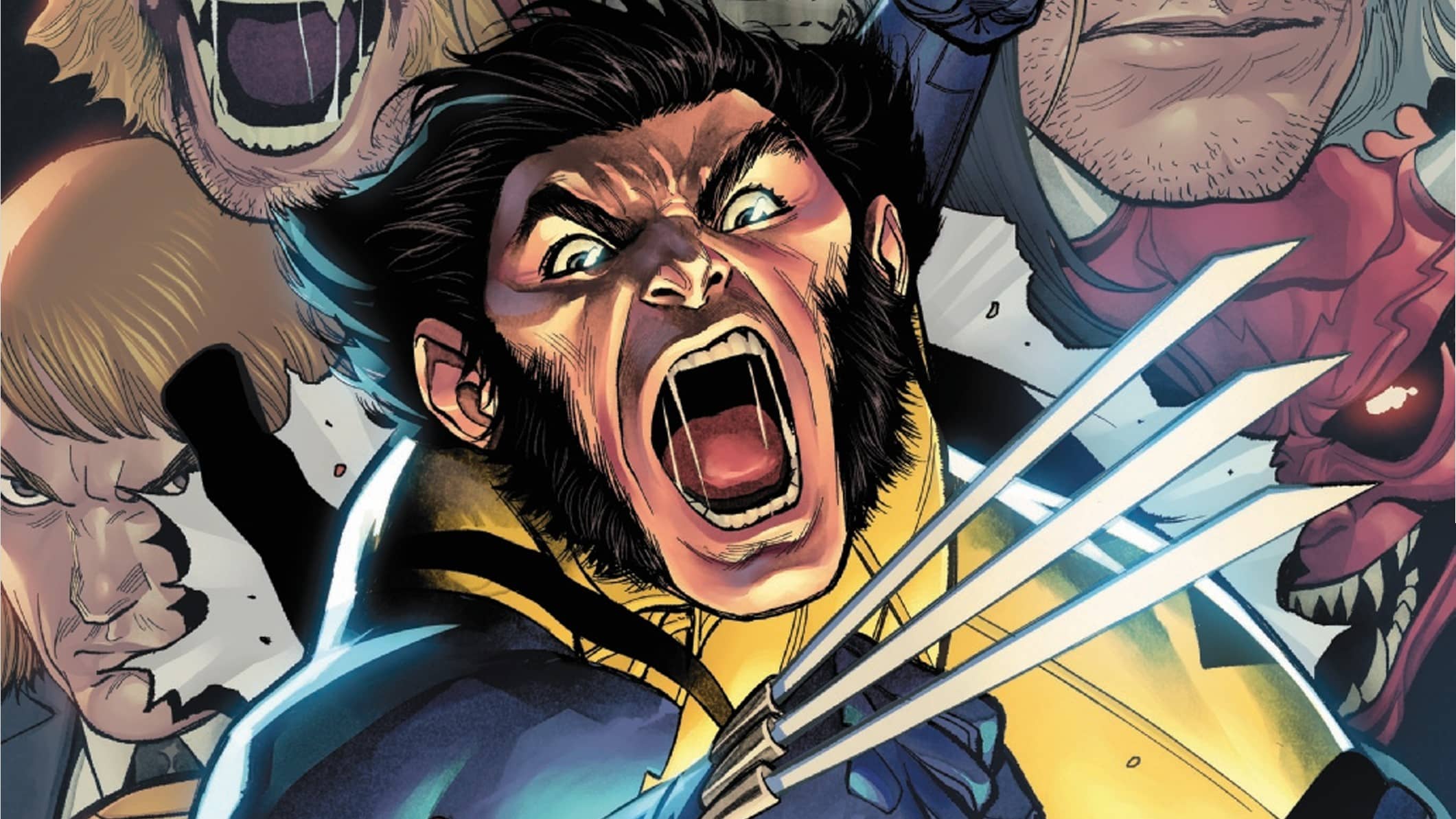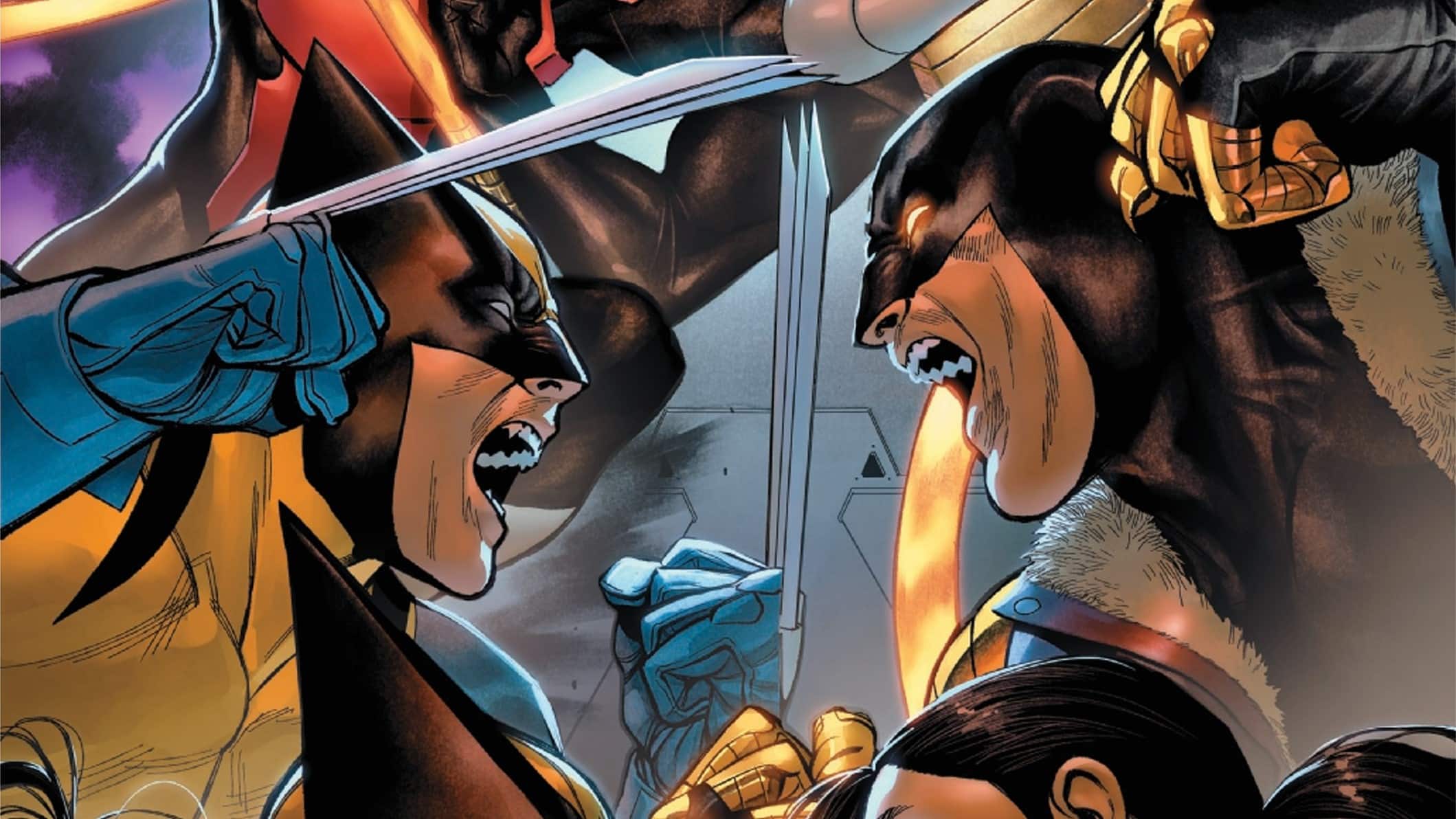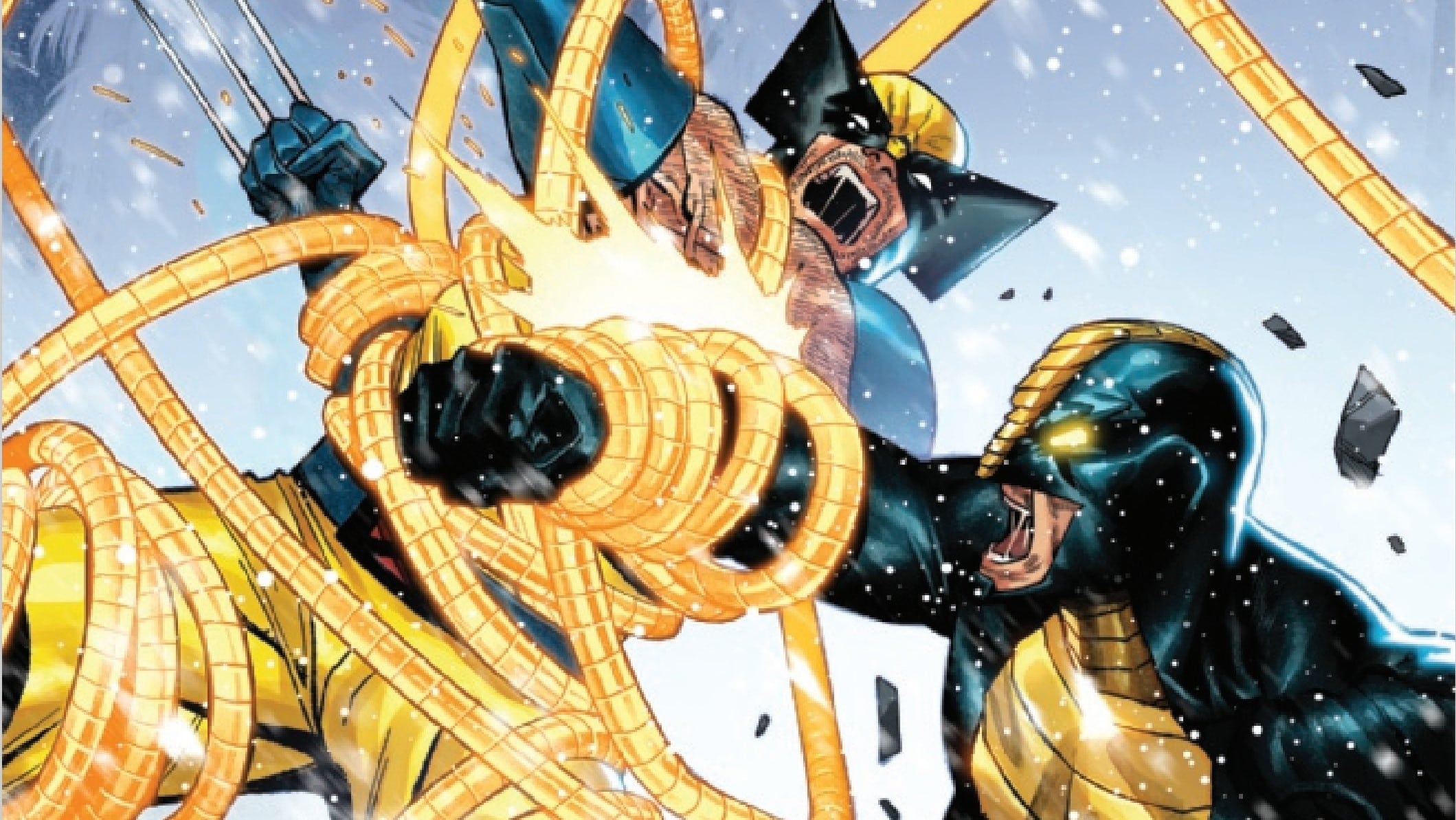Ed. note: A Marvel facsimile edition of Wolverine Vol. 2 #88 is being released this week, ostensibly to tie into the Deadpool & Wolverine movie. Editor Austin Gorton decided to dive into the issue to figure out what makes it significant. Find more of his throwback reviews at The Real Gentlemen of Leisure.
And for more on Wolverine #88, listen to this week’s Battle of the Atom.
Wolverine goes to the City by the Bay to check in on Kane and Copycat, but finds a certain Merc with a Mouth waiting in Wolverine Vol. 2 #88, written by Larry Hama, drawn by Adam Kubert and Fabio Laguna, inked by Mark Farmer and Tim Townsend, colored by Marie Javins and lettered by Pat Brosseau.
For better or worse, Wolverine #88 is a snapshot of the mid-’90s X-books. Cover dated December 1994 and landing in comic shops on Oct. 11 of that year, it arrived just slightly more than two months before the “Age of Apocalypse” begins in X-Men Alpha #1. It features the first on-panel encounter between Wolverine and Deadpool, in a story that also features Copycat and Garrison Kane, two characters whose stars arguably never shone brighter than in the years 1992-95. Half of the issue is drawn by Adam Kubert, the regular Wolverine artist at the time, while the other half is drawn by Jim Lee by way of Fabio Laguna (more on that below). It’s not a terribly good issue, but it is a remarkable representation of what the X-books were doing at the time: featuring hot characters, big Image-isitic art and meandering storylines.
Wolverine #88 is really a Kane and Copycat story that Wolverine happens to guest star in because he’s the character who pays the bills. For those who don’t remember, Garrison Kane is the one-time Weapon X and former mercenary pal of Cable who has cybernetic arms that shoot his hands at people. Copycat, aka Vanessa Carlysle, is a shapeshifter who posed as Domino to get close to Cable on orders from Mister Tolliver (secretly Cable’s son Tyler, before he took the name Genesis and started cosplaying as Apocalypse). Events in X-Force and Cable’s solo series led Kane and Copycat to grow close, and as of this issue, the pair are semi-retired, trying to make a go of it in San Francisco. Deadpool is Copycat’s ex-boyfriend (Morena Baccarin plays a version of this character in the Deadpool films) and wants her back. He runs into Wolverine, and they fight. Then Deadpool finds Kane and Copycat, and a four-way fight ensues. In the end, Deadpool runs off, Kane and Copycat go back to their life and Wolverine moves on.

The whole reason Wolverine is in San Francisco and gets embroiled in the story is because his old buddy James Hudson asked him to check on Kane (whom Hudson presumably knows from Kane’s time working for the Canadian Department H under Wolverine’s old moniker, Weapon X). Wolverine left the X-Men in Wolverine #75, after Magneto ripped out his adamantium, and has been slowly working his way back to New York. Writer Larry Hama uses the fact that Kane, Hudson and Wolverine are all Canadians with a linked history as the vehicle to bring Wolverine into a story that really has nothing to do with him. It’s largely an excuse to work in a Deadpool cameo, which was still something of a novelty at the time. In 1994, Deadpool was popular — he’d segued appearances as a villain in late New Mutants and early X-Force issues into a pair of miniseries, was appearing on trading cards and getting action figures, etc. But he was not the cornerstone of Marvel publishing, capable of holding down multiple titles and feature films, he would become. Given the pair are co-starring in a movie together, this first meeting, coming almost four years after Deadpool debuted, is almost quaint (by contrast, Cable got teamed up with Wolverine six issues after he first appeared).
Aside from being the first meeting between Deadpool and Wolverine, a fact that makes the issue a bigger deal now than it was when it first came out, Wolverine #88 may be best known for being one of the most egregious examples of art swiping from this era. Swiping — the practice of one artist intentionally copying a cover, panel or page from another artist without crediting the original — was relatively common in this era, when a number of artists were emulating the style of mega-popular artists like Jim Lee (and soon Joe Madureira), especially in the X-books (given Lee’s past connection to that franchise). While Adam Kubert draws roughly half of this issue completely in his own style, the second half is credited to Fabio Laguna. The majority of his pages are overt swipes of previous Jim Lee pages. Moreover, the Laguna art that isn’t swiped is roughed. Backgrounds disappear, the clothes characters are wearing suddenly change, Wolverine’s bone claws suddenly look like they’re metal again (in part because, in the swiped art, they were metal). Whatever work Kubert did in the first half of the issue energizing a by-the-numbers script with big double-page spreads and madcap layouts goes right out the window.

Perhaps it is because the story itself is so slight, Kane and Copycat far from gripping protagonists, that Wolverine #88 is remembered best for reasons outside the content of the issue. Even if the Wolverine/Deadpool face-off was something of an afterthought at the time, a way to kill time in the runup to Wolverine’s return to the X-Men and the “Age of Apocalypse,” it’s given the issue additional cachet in the wake of the character’s cinematic team-up, making it a sought-after collector’s item (Covrprice currently lists the fair market value of a near-mint issue at around $100; a slabbed 9.8 of the more rare newsstand edition sold for just over $1,500 not long ago). And the final pages of the book, with its copious amount of Jim Lee swipes, have also brought it a fair amount of notoriety that has nothing to do with the story or characters.
But if you wanted to read an issue representative of what the X-books were like in late 1994, you’d be hard pressed to find a better example than Wolverine #88. From the narrative touchstones like Wolverine’s bone claws, to Deadpool’s nascent popularity, to the way the plot is basically just an issue-long fight, to the centering in the story of characters like “Shoot His Hands at Bad Guys” Kane and Copycat, to the jarring artistic shift mid-issue and, yes, all the swipes. This isn’t the worst X-Men comic of the era. And there are certainly better ones from this time as well. But this is perhaps the most representative one of this particular moment in X-Men time.
Austin Gorton also reviews older issues of X-Men at the Real Gentlemen of Leisure website, co-hosts the A Very Special episode podcast, and likes Star Wars. He lives outside Minneapolis, where sometimes, it is not cold. Follow him @austingorton.bsky.social.






